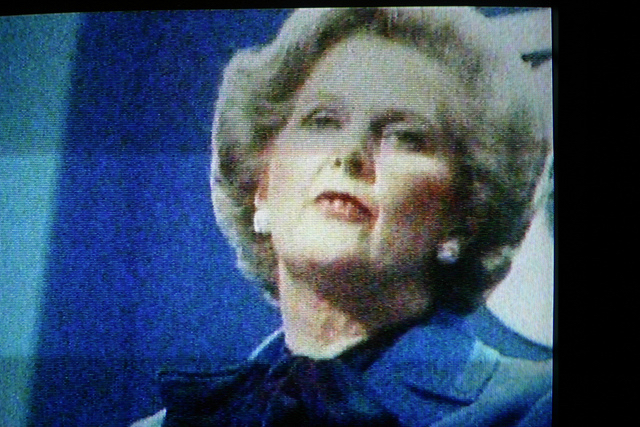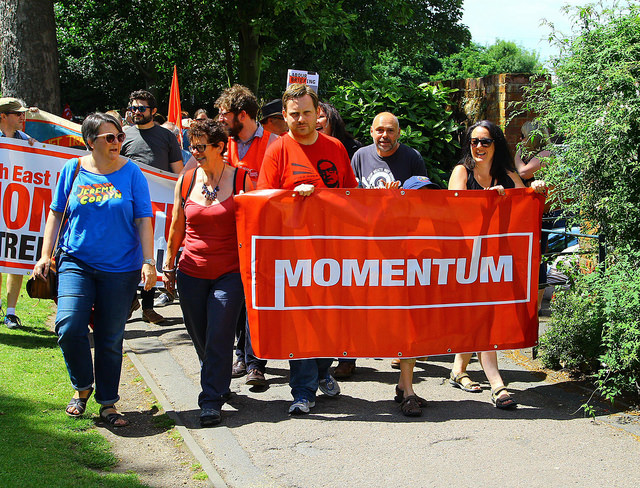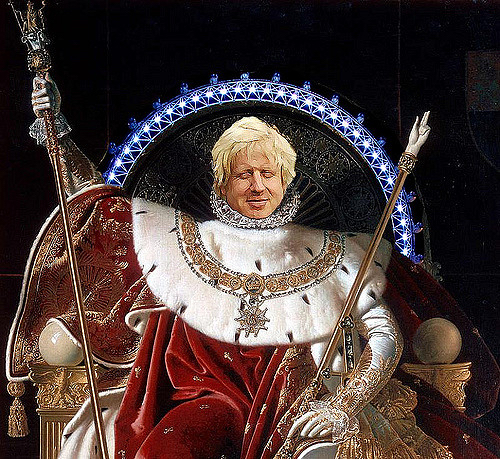Make no mistake about it. Theresa May called this election to reap the rewards of Brexit before the reality of the hits the country. The strategy is to put electoral advantage before the economy, the society, everything in the end. And in the end, we will all pay the price.
In theory, the Labour Party should be able to trounce the Conservatives. It has been seven years of economic stagnation, falling wages and public services crippled by austerity.
Theresa May is unelected in the same way that Gordon Brown was unelected. No one except for the true blue fanatics are happy with these circumstances.
Yet Labour is still way behind in the polls and has failed to gain ground in the local elections.
What explains this? There is one answer: Jeremy Corbyn. If only Labour had a sensible, moderate leader who could hold the centre ground, then the party would be able to trounce the Conservative government. But this is a fantasy. The inconvenient truth is New Labour cost the party five million votes from its landslide in 1997 to 2010 when it was finally dislodged from the centre of power.
We’re now told that Corbyn’s leadership will be quickly dismantled after a terrible defeat at the ballot box. This is meant to disprove the viability of left-wing politics and reconfirm the need for a centrist candidate. The truth is less convenient for Corbyn’s enemies. The project of reinventing Labour as a modern left-wing party has faced challenges from the establishment and the media, but no challenge as great as Brexit.
The Falklands Factor
Brexit guarantees an uphill struggle for Corbyn. The Labour leadership is caught between two opposing constituencies: Remainers and Leavers. It’s difficult to think of a way for Labour to bring together these two camps and make encroachments into Tory territory at the same time. Corbyn has adopted a centrist leadership style to try and maintain an unwieldy coalition. The end result is that Labour is advocating a ‘soft’ Brexit.
Although this is probably the most coherent option for Labour, the two opposing sides in Brexit are not satisfied with it. Theresa May has the upper hand because she has promised a quick, clean Brexit with all the right trappings: national sovereignty, immigration controls and a new economic order. The Conservative Party only has to absorb the 12% of voters who supported UKIP in 2015. And this strategy looks set to succeed.
https://www.youtube.com/watch?v=F61y25PVRwI
Brexit may be as big for the May years as the Falklands war was for Thatcher. Labour lost the 1983 election thanks to the swift victory against Argentina and the country rallied to the Union flag. Left-wing Labour leader Michael Foot supported the war, but was still taken out by its aftermath. Today Brexit is proving to be Corbyn’s Falklands. It’s the times that make the man, not the other way around.
A veteran of the struggle against the bipartisan policy of appeasement, Michael Foot saw General Galtieri as a fascist dictator and took the side of the British state in the crisis. Much like over Brexit, the left was divided over the Malvinas at the time. Tony Benn came out against military retaliation and called for a diplomatic solution via the United Nations. This was not a popular stance.
On the other hand, prominent figures on the left such as George Galloway and Christopher Hitchens backed the armed response to inflict a defeat on the junta in Buenos Aires. They overlooked the most basic insight of revolutionary defeatism that the class enemy is always at home and only Thatcher would gain from this war. In the end, both sides were vindicated: Galtieri fell and Thatcher was reelected.
Before the 1982 crisis, Thatcher was the most unpopular prime minister in living memory and, after the islands were recaptured, her approval rating skyrocketed to 59%. The Conservative Party hit 51% in the polls and remained at 40% through to the election. Thatcher’s military response to the crisis was the first of two major ideological victories, alongside the Miners’ Strike of 1984.
The Silent Crisis
Thatcher was never brought down by the Labour Party. Instead, it was the Conservatives, who fearing electoral defeat moved to oust her in 1990. The Tories inadvertently opened up a deep void in their party, which was never totally surmounted. The first attempt was to propel John Major into the void, but he would prove to be a poor stand-in for the Iron Lady.
At first, the Major government began to initiate market reforms in the public sector, mainly performance targets, extending the internal market the Thatcherites had fostered inside the NHS to the rest of the state. Then came the ‘Back to Basics’ campaign for traditional moral values. These two efforts ran alongside Major’s attempts to take Britain deeper into the European project.
By stark contrast, Theresa May is building her political agenda on Brexit. May’s mission is to answer the European question and settle old scores. It’s possible that May will succeed in the short run, however, politics as we know it may have come to an end with Brexit. In other words, there may well be unforeseen crises on the road ahead. The victories of today could be short-lived.
David Cameron was the first Conservative leader to win a majority since 1992. Many commentators are now predicting May will expand this small majority into a super-majority and establish herself as Thatcher 2.0, but they are mistaken. Whatever positive gains the Tories make in this election, the decline of the two-party system will only be postponed for another election cycle.
Photograph courtesy of Sarah Joy. Published under a Creative Commons license.





